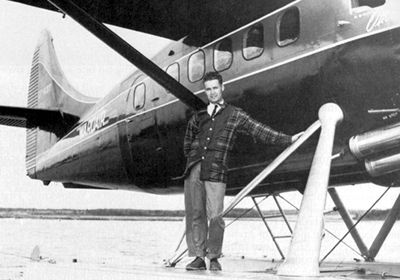Browse "Things"
-
Collection
War of 1812
The War of 1812 (which lasted from 1812 to 1814) was a military conflict between the United States and Great Britain. As a colony of Great Britain, Canada was swept up in the War of 1812 and was invaded a number of times by the Americans. The war was fought in Upper Canada, Lower Canada, on the Great Lakes and the Atlantic, and in the United States. The peace treaty of Ghent, which ended the...
"https://d2ttikhf7xbzbs.cloudfront.net/media/media/d60240b0-5df1-48c0-bd0f-e3c0fbc67705.jpg" // resources/views/front/categories/view.blade.php
https://d2ttikhf7xbzbs.cloudfront.net/media/media/d60240b0-5df1-48c0-bd0f-e3c0fbc67705.jpg
-
Timelines
War of 1812 Timeline
The war of 1812 was a military conflict between the United States and Great Britain. As a colony of Great Britain, Canada was swept up in the War of 1812 and was invaded a number of times by the Americans. This timeline allows you to explore important events that occurred during the War of 1812 (which ended in 1815), as well as significant events that happened before and after the war.
"https://d2ttikhf7xbzbs.cloudfront.net/media/media/56567521-2ca2-4ae0-bceb-b259db0aca8e.jpg" // resources/views/front/categories/view.blade.php
https://d2ttikhf7xbzbs.cloudfront.net/media/media/56567521-2ca2-4ae0-bceb-b259db0aca8e.jpg
-
Article
War of the Austrian Succession
The War of the Austrian Succession (1740–48) included conflict in Europe, North America and India. The military operations in North America are known as King George's War (1744–48).
"https://d2ttikhf7xbzbs.cloudfront.net/media/media/5a0c0b6b-1a28-4955-ac10-111582958476.jpg" // resources/views/front/categories/view.blade.php
https://d2ttikhf7xbzbs.cloudfront.net/media/media/5a0c0b6b-1a28-4955-ac10-111582958476.jpg
-
Article
War of the Spanish Succession
The War of the Spanish Succession, 1701–1714 (also known as Queen Anne's War), was a general European war that spread around the globe to include the colonies of the major powers — including French and English colonies in North America.
"https://development.thecanadianencyclopedia.ca/images/tce_placeholder.jpg?v=e9dca980c9bdb3aa11e832e7ea94f5d9" // resources/views/front/categories/view.blade.php
https://development.thecanadianencyclopedia.ca/images/tce_placeholder.jpg?v=e9dca980c9bdb3aa11e832e7ea94f5d9
-
Article
War on the Lakes in the War of 1812
The North American heartland, linked by rivers running from the north, west, and south and flowing eastwards via the St Lawrence River, saw intense fighting during the War of 1812.
"https://development.thecanadianencyclopedia.ca/images/tce_placeholder.jpg?v=e9dca980c9bdb3aa11e832e7ea94f5d9" // resources/views/front/categories/view.blade.php
https://development.thecanadianencyclopedia.ca/images/tce_placeholder.jpg?v=e9dca980c9bdb3aa11e832e7ea94f5d9
-
Article
Warbler
Warbler is a name applied to several groups of birds, primarily the New World wood warblers, and Old World warblers of which only 3 species commonly breed in Canada.
"https://d2ttikhf7xbzbs.cloudfront.net/media/media/8ba88883-d122-40fb-9532-84b5544afa79.jpg" // resources/views/front/categories/view.blade.php
https://d2ttikhf7xbzbs.cloudfront.net/media/media/8ba88883-d122-40fb-9532-84b5544afa79.jpg
-
Article
Ward Method
Ward method. Initially a liturgical movement as well as a music-training system. It was developed by Justine Ward (USA 1880-1975) to accommodate the directives of Pius X's Motu proprio (1903) for the renewal of sacred song.
"https://development.thecanadianencyclopedia.ca/images/tce_placeholder.jpg?v=e9dca980c9bdb3aa11e832e7ea94f5d9" // resources/views/front/categories/view.blade.php
https://development.thecanadianencyclopedia.ca/images/tce_placeholder.jpg?v=e9dca980c9bdb3aa11e832e7ea94f5d9
-
Article
Wardair International Ltd
Wardair International Ltd, with head offices in Toronto, was an international and domestic airline incorporated in Alberta in 1953 as Wardair Ltd. Initially a bush charter airline based in Yellowknife, NWT, the name was changed in 1962 to Wardair Canada Ltd. It became a public company in 1967.
"https://d2ttikhf7xbzbs.cloudfront.net/media/media/b5845132-2659-4002-a9c2-afc8a80eaa01.jpg" // resources/views/front/categories/view.blade.php
https://d2ttikhf7xbzbs.cloudfront.net/media/media/b5845132-2659-4002-a9c2-afc8a80eaa01.jpg
-
Article
Warner Music Canada Ltd.
Warner Music Canada Ltd (successively, 1967-90, Warner Reprise Canada Ltd, Kinney Music of Canada Ltd, WEA Music of Canada Ltd).
"https://development.thecanadianencyclopedia.ca/images/tce_placeholder.jpg?v=e9dca980c9bdb3aa11e832e7ea94f5d9" // resources/views/front/categories/view.blade.php
https://development.thecanadianencyclopedia.ca/images/tce_placeholder.jpg?v=e9dca980c9bdb3aa11e832e7ea94f5d9
-
Article
Warner/Chappell Music Canada Ltd
Warner/Chappell Music Canada Ltd (Chappell & Co Ltd until 1987). Music publishing firm originating with a British firm established in London in 1810 and opened for business 1 Jan 1811. A Canadian branch of Chappell's New York office opened in Toronto in 1912 and closed in 1920.
"https://development.thecanadianencyclopedia.ca/images/tce_placeholder.jpg?v=e9dca980c9bdb3aa11e832e7ea94f5d9" // resources/views/front/categories/view.blade.php
https://development.thecanadianencyclopedia.ca/images/tce_placeholder.jpg?v=e9dca980c9bdb3aa11e832e7ea94f5d9
-
Article
Warrendale
The DOCUMENTARY FILMWarrendale (1967) covers seven weeks in a Toronto-area treatment centre occupied by twelve emotionally disturbed children, most of them abandoned by their parents.
"https://development.thecanadianencyclopedia.ca/images/tce_placeholder.jpg?v=e9dca980c9bdb3aa11e832e7ea94f5d9" // resources/views/front/categories/view.blade.php
https://development.thecanadianencyclopedia.ca/images/tce_placeholder.jpg?v=e9dca980c9bdb3aa11e832e7ea94f5d9
-
Article
Canadian Music from Wars and Armed Conflicts
Many of the wars and armed conflicts that Canada participated in inspired songs and musical works. This article surveys material that was written either during, immediately after or in retrospect of a particular conflict (see also History of Canada in Music; Patriotic Songs; Battle Music; Canadian Songs of the First World War).
"https://development.thecanadianencyclopedia.ca/images/tce_placeholder.jpg?v=e9dca980c9bdb3aa11e832e7ea94f5d9" // resources/views/front/categories/view.blade.php
https://development.thecanadianencyclopedia.ca/images/tce_placeholder.jpg?v=e9dca980c9bdb3aa11e832e7ea94f5d9
-
Article
Wartime Elections Act
The Wartime Elections Act of 1917 gave the vote to female relatives of Canadian soldiers serving overseas in the First World War. It also took the vote away from many Canadians who had immigrated from “enemy” countries. The Act was passed by Prime Minister Robert Borden’s Conservative government in an attempt to gain votes in the 1917 election. It ended up costing the Conservatives support among certain groups for years to come. The Act has a contentious legacy. It granted many women the right to vote, but it also legitimized in law many anti-immigrant sentiments.
"https://d2ttikhf7xbzbs.cloudfront.net/media/media/6e19f5db-f5f6-4776-baf8-40a98b38b97d.jpg" // resources/views/front/categories/view.blade.php
https://d2ttikhf7xbzbs.cloudfront.net/media/media/6e19f5db-f5f6-4776-baf8-40a98b38b97d.jpg
-
Article
Wartime Home Front
The two world wars of the 20th century were total wars that involved the whole nation, and the "home front" became a critical part of Canada’s effort.
"https://development.thecanadianencyclopedia.ca/images/tce_placeholder.jpg?v=e9dca980c9bdb3aa11e832e7ea94f5d9" // resources/views/front/categories/view.blade.php
https://development.thecanadianencyclopedia.ca/images/tce_placeholder.jpg?v=e9dca980c9bdb3aa11e832e7ea94f5d9
-
Article
Wartime Information Board
Wartime Information Board, est 9 Sept 1942, succeeded the Bureau of Public Information, which had been formed early in WWII to issue certain information on the course of the war to the public. By 1942 the government believed that its troubles over CONSCRIPTION derived from inadequate publicity.
"https://d2ttikhf7xbzbs.cloudfront.net/media/media/74f42cfb-9915-4a55-b62d-28b95a2c107f.jpg" // resources/views/front/categories/view.blade.php
https://d2ttikhf7xbzbs.cloudfront.net/media/media/74f42cfb-9915-4a55-b62d-28b95a2c107f.jpg
